Day 3 of a 3-day Early Winter Tour today. It was a mostly rather grey and overcast day with a chilly east wind, but it stayed dry until we were on our way home at the end of another very successful day’s birding.
It was a very grey start and with a gusty east wind still we decided to start with a quick look out at the sea at Cley. There were not as many birds moving as yesterday – fewer auks, some distant lines and several closer Guillemots; a few small groups of Common Scoter flew past; one or two Gannets and a few Red-throated Divers. Were just about to move on when someone called a Great Northern Diver and we managed to pick it up heading east offshore. A nice return for our 40 minutes work.
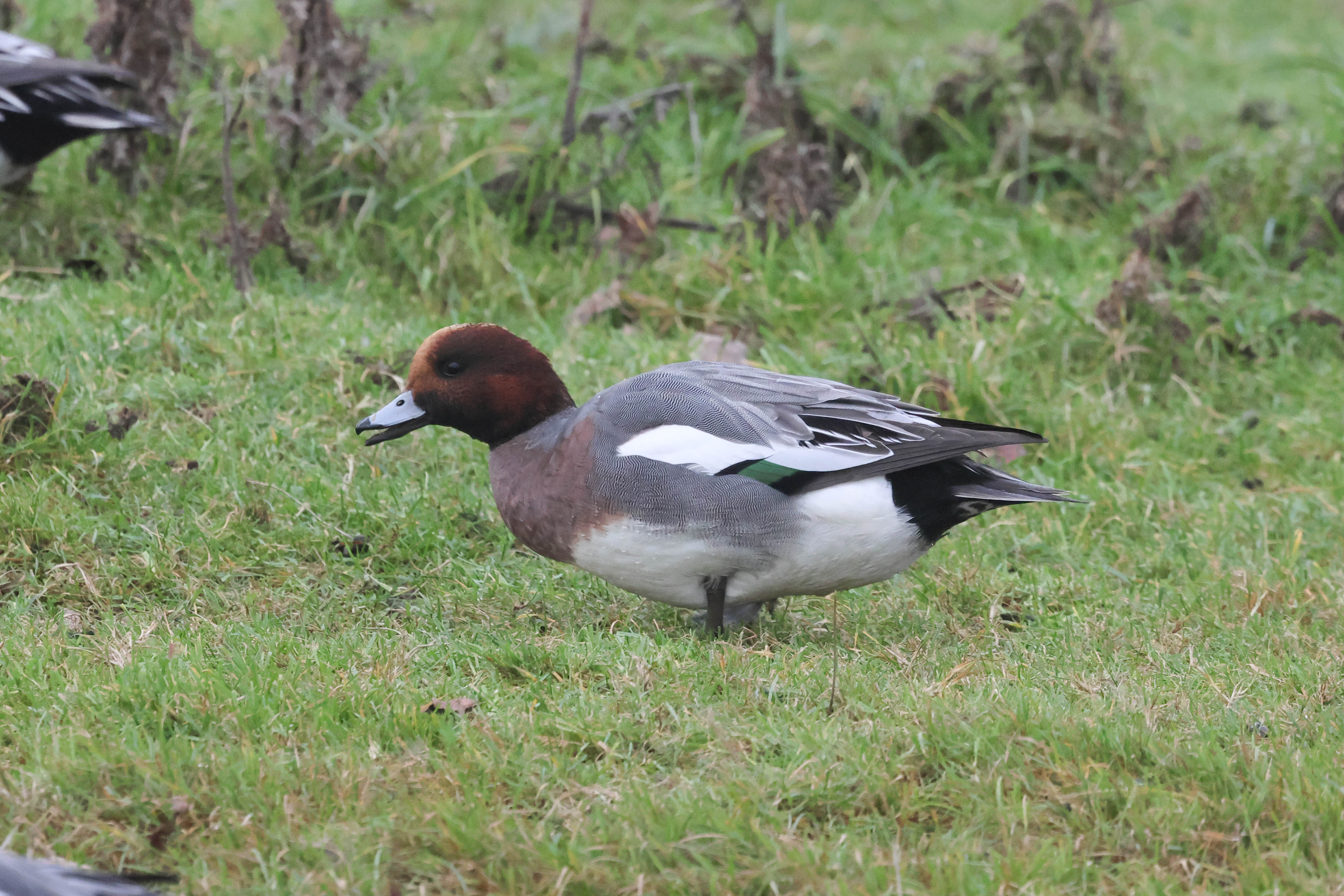
As it started to brighten up a little, we made our way along the coast to Holkham. The car park was quite busy (for a weekday in early December at least!), and it turned out there was a 5 mile fun run here this morning. Thankfully, it didn’t seem to be disturbing the birds. There were lots of Wigeon on the grazing marsh right beside Lady Anne’s Drive.
A couple of what resembled clods of earth out in the grass were actually Grey Partridges. We found an angle where we could get a clearer view and counted six together. They were busy feeding, mostly heads down, but one looked up occasionally and showed its orange face.
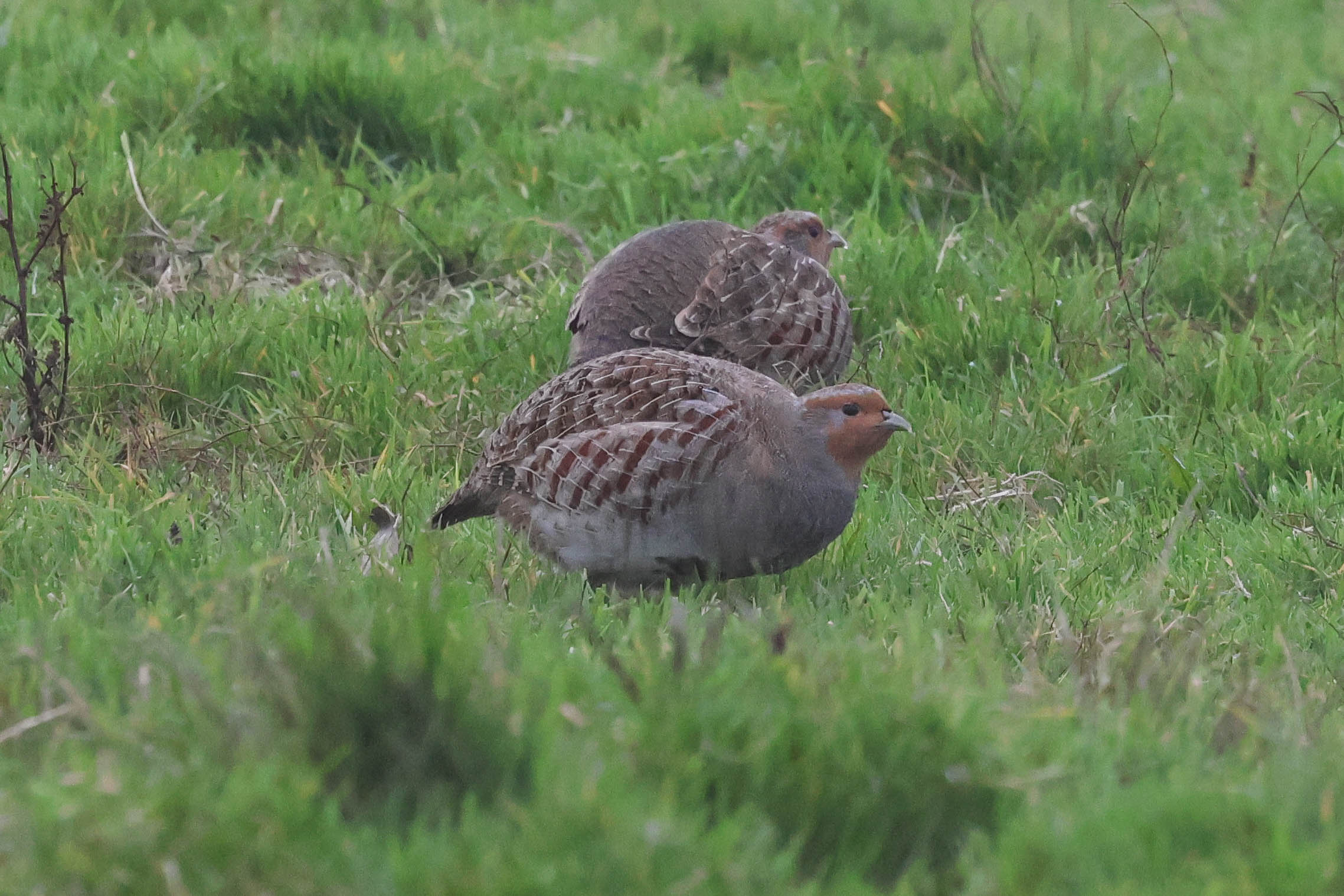
Scanning the trees in the distance, out towards Decoy Wood, there were a few Marsh Harriers up, and several Common Buzzards mostly perched on the bushes. A Red Kite drifted over and a Sparrowhawk flew across. A Raven flew in towards us kronking, over Lady Anne’s Drive and disappeared off east.
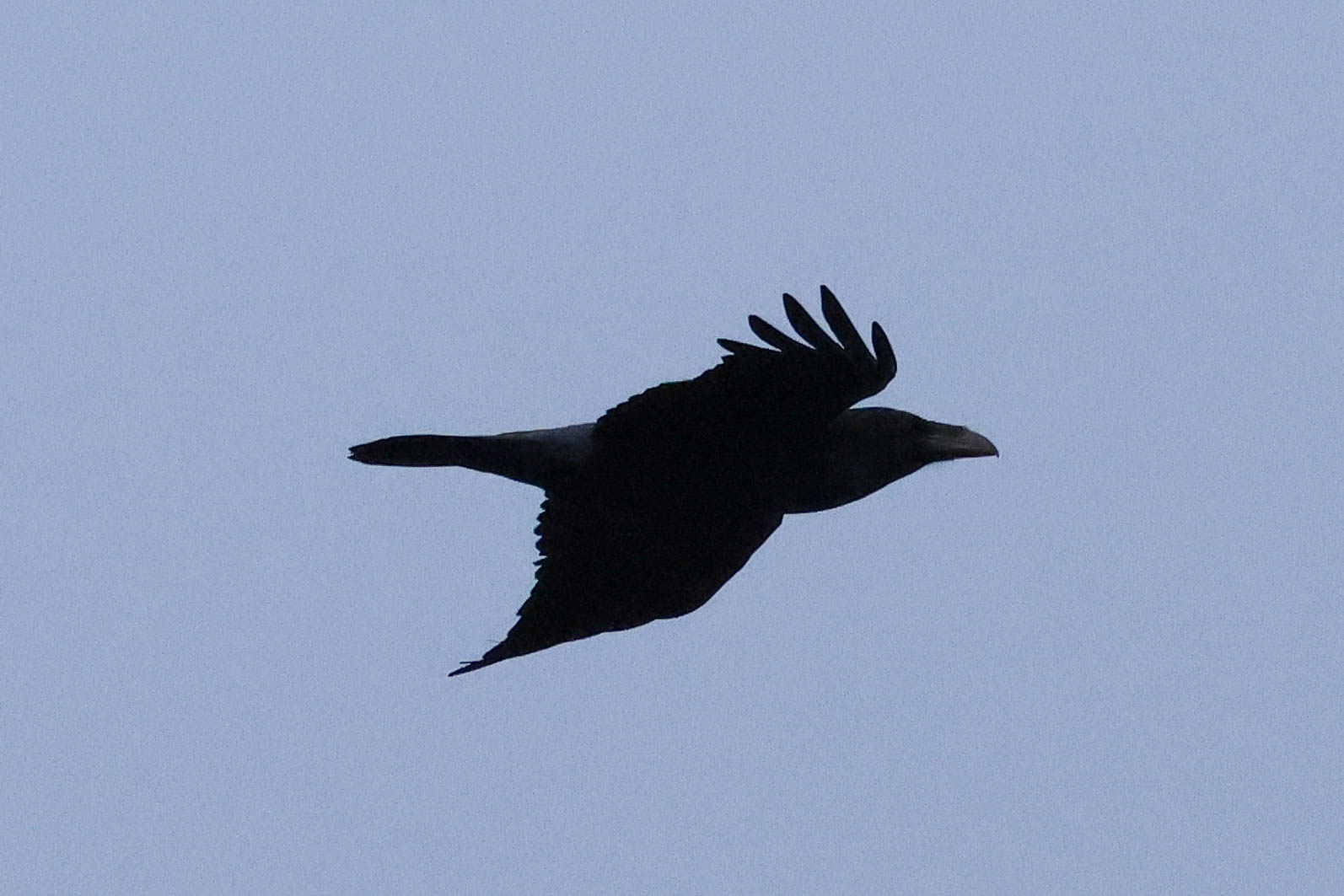
From the top of the Drive, we scanned down along the hedgeline to the west. There were several Blackbirds and a Jay out on the grass. Three Bullfinches were feeding on the remains of the blackberries in the hedge – two browner females and a smart pink male. They stayed out in view feeding for a while, giving us plenty of time to admire them through the scopes.
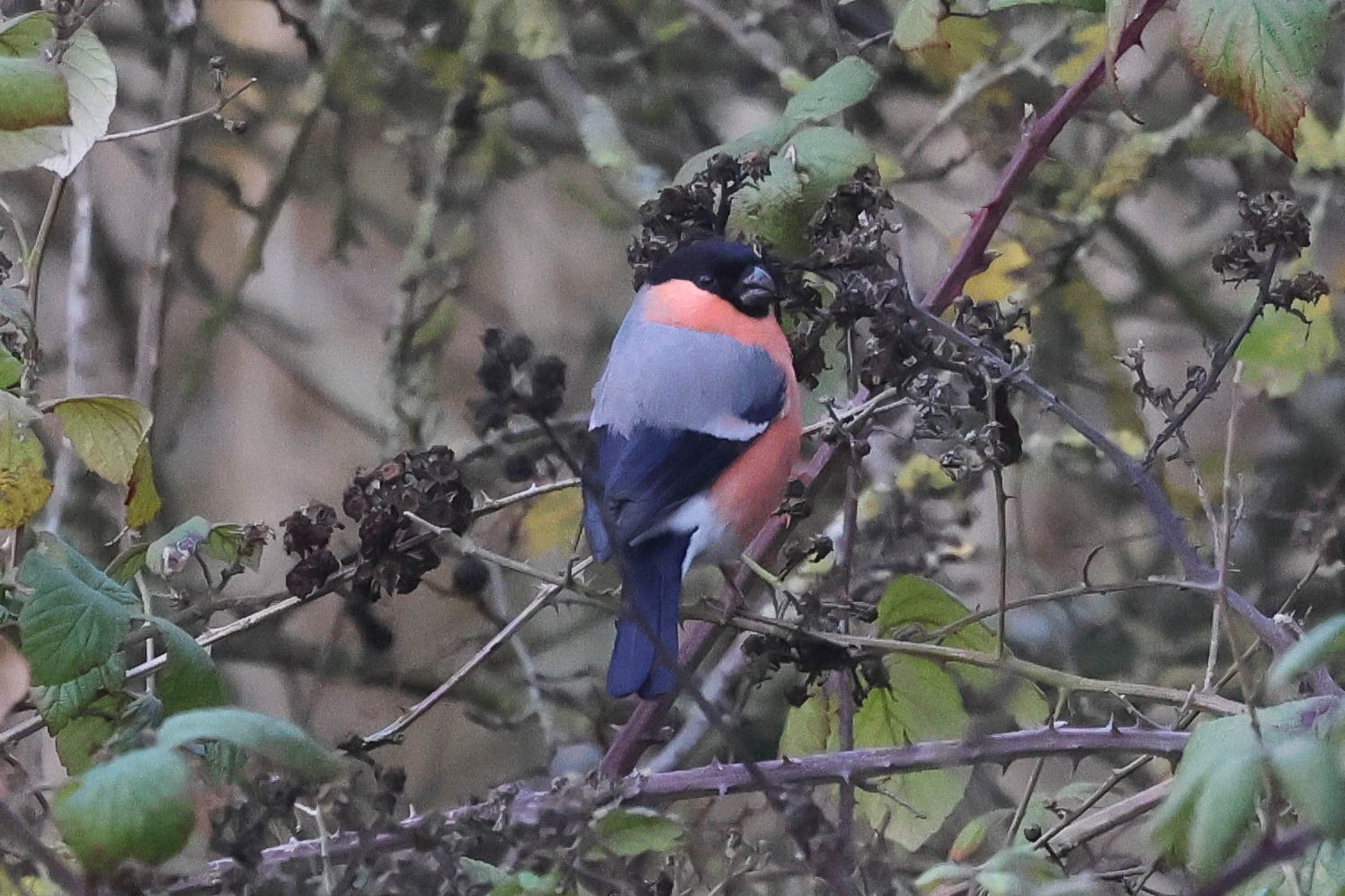
Out onto the saltmarsh, we turned east and walked down towards the cordon. Not far along, there was a flock of Linnets, pipits and Skylarks feeding out in the vegetation not far in from the path. But we could see some rather ominous dark clouds approaching ahead so we decided to head for the Shorelarks first, just in case the weather deteriorated, and come back to the other birds later.
We were glad we did. When we arrived, the Shorelarks were in the cordon but very close to the fence. We watched as they picked around at the dead flower heads, feeding – great views, some of the best we have had of them this winter. Some were in and out of the vegetation but we eventually saw all twelve of the Shorelarks together that are currently enjoying the hospitality here. Smart birds, with their yellow faces and black masks.

After a while, something spooked the Shorelarks and they took off. They flew round for a minute or so and then came back in past us, landing again in the cordon, but a bit further out now. We took that as a cue to move on.
The dark clouds had passed over so we continued on out to the beach to look at the sea. There were lots of Common Scoter offshore but the first bird we got a scope on was a Velvet Scoter. It was quite close in, but a bit further up the beach from where we were standing. Then scanning back along the shore we found more Velvet Scoters closer to us – eventually we saw eight together, but there could have been more as they were diving and kept breaking into smaller groups. Several Red-breasted Mergansers were close in, diving in the breakers too.
We found a Slavonian Grebe close in too, and then a second one a bit nearer. There were several Great Crested Grebes feeding offshore as well, but we couldn’t see anything different out here today. Turning our attention to the beach, there were a few Sanderling running about on the shore, along with one or two Oystercatchers and Bar-tailed Godwits. A large group of Cormorants were lined up on the sand bar further out, drying their wings.
As we made our way back, we stopped to look at the pipits on the saltmarsh now. There was a nice mix of Rock Pipits and Meadow Pipits, giving good side by side comparisons through the scopes, the Rock Pipits larger and swarthier. A group of Black-tailed Godwits were feeding on the saltmarsh nearby.
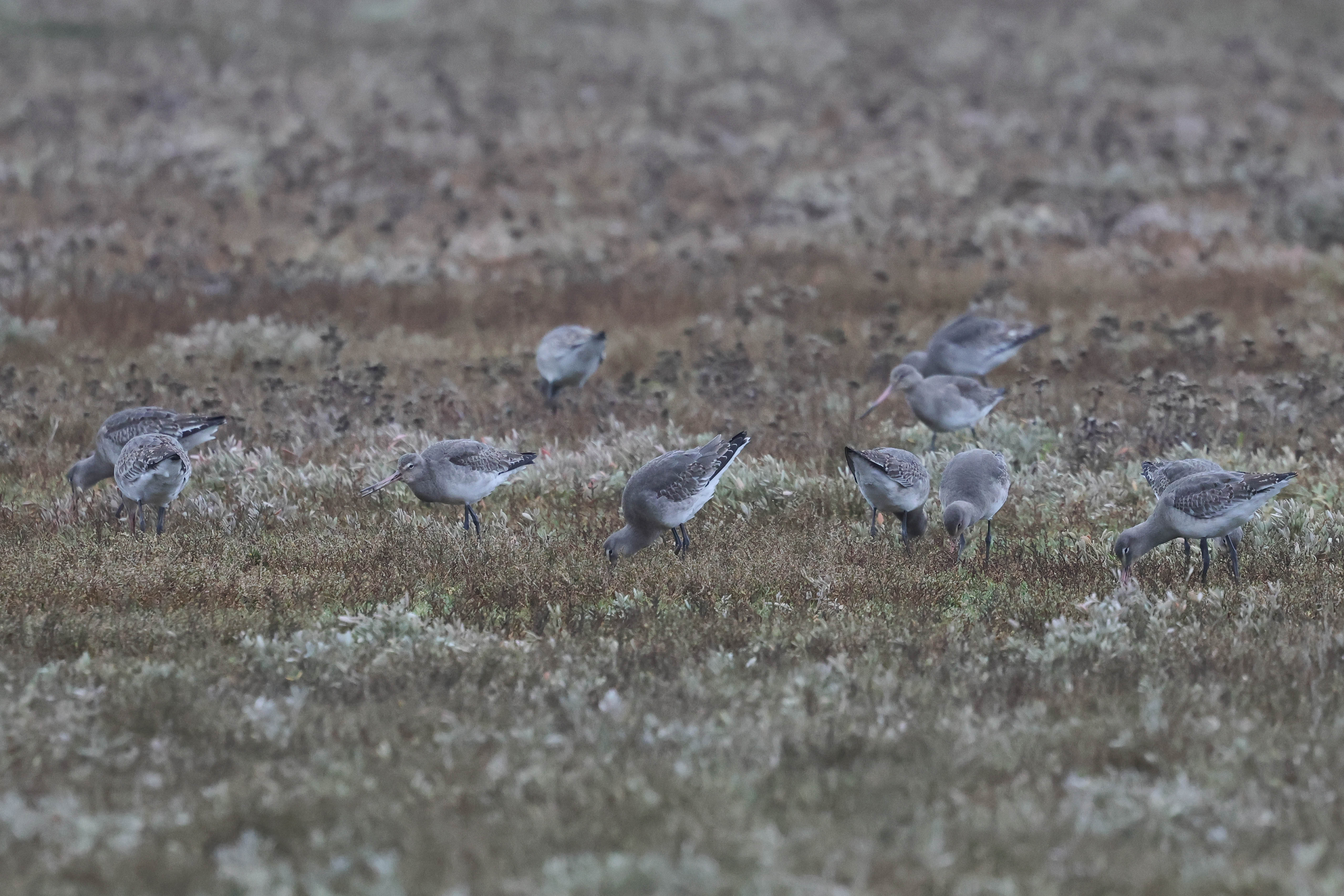
It was just after midday already, so we decided to stop for an early lunch. News had come through that a dowitcher had appeared at Titchwell, which would be a new bird for most of the group, and everyone was keen to try to see it. If it hung around, we could head back that way this afternoon. We stopped at the Lookout for lunch and while we were eating confirmation came through that it was a Long-billed Dowitcher, possibly the bird that was hanging around at Cley for much of last month.
So after lunch, we set off west. On the way, we made a quick stop overlooking the grazing marshes. As we got out of the minibus, we could immediately see at least 40 Russian White-fronted Geese feeding out on the grass in the near corner.
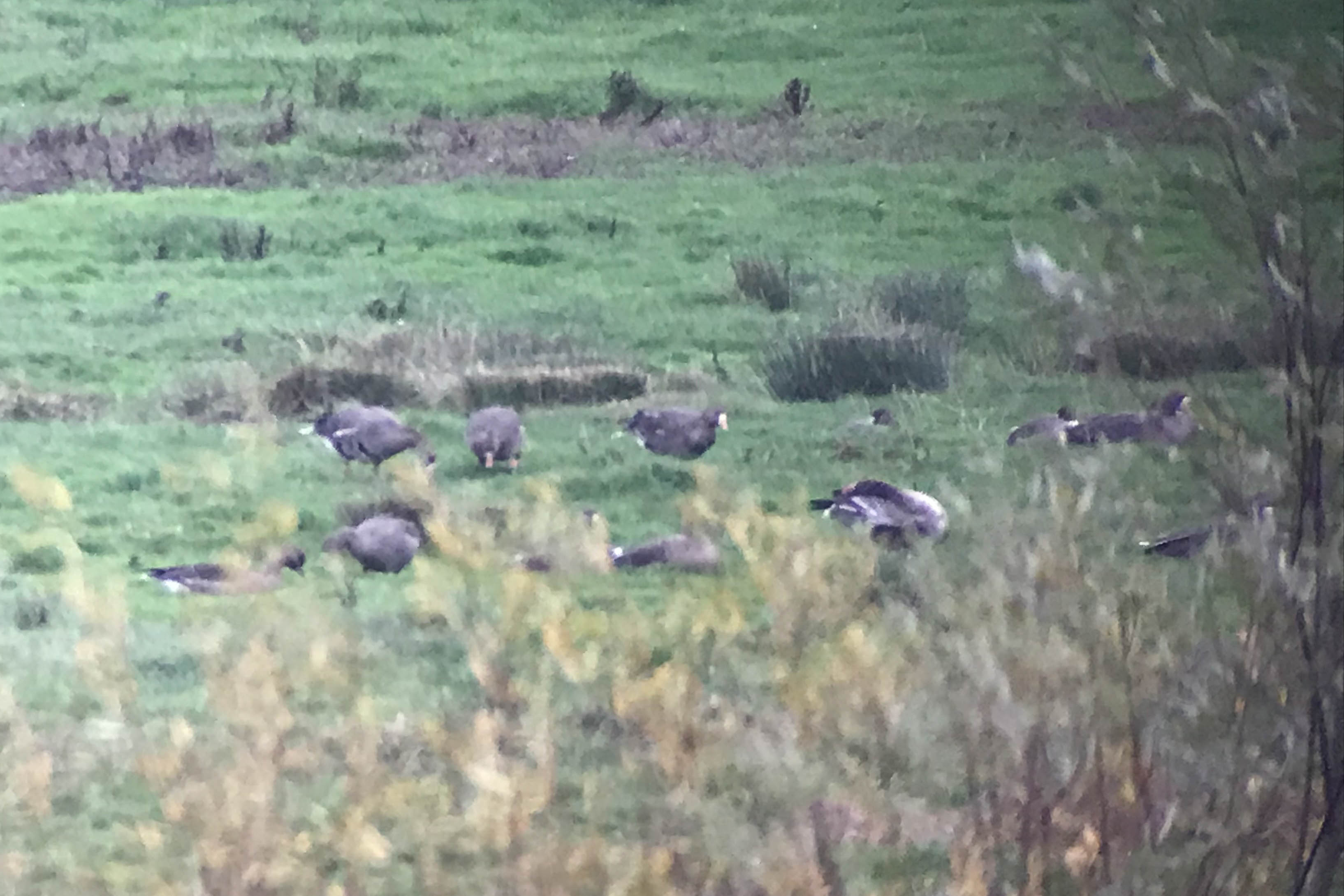
A Great White Egret immediately stood out, out in the middle, but with most of the cattle taken in for the winter now we weren’t sure whether the Cattle Egrets would still be here. We could see a small group of Belted Galloways right at the back, in front of the pines, but they were behind some brambles and in some very tall vegetation. Luckily, we saw a Cattle Egret fly up and land on the back of one of the cows, just like they do with herd animals on the African savannah! It dropped down again quite quickly, but knowing they were there we continued to scan and when some of the cows moved into a clearer space, we could see at least three Cattle Egrets walking around with them now.
A Kestrel was hovering just in front as we pulled up, there were several Marsh Harriers out on the grazing marsh and several Common Buzzards on various fence posts. A Red Kite drifted over. There were hundreds of Lapwings roosting out on the grass, and when something spooked them they all took to the air together and swirled round, an impressive sight.
We didn’t linger long, as we wanted to get to Titchwell. Arriving in the car park, we headed straight out towards the Freshmarsh. Some locals were just leaving, and mentioned to us that a Long-eared Owl had just been found at Brancaster. First things first – we would go out and try to see the Long-billed Dowitcher first, then maybe try for that afterwards.
The Long-billed Dowitcher had been asleep on one of the islands earlier, but had woken up and was feeding actively when we arrived. We had some good views of it through the scopes as it fed along the muddy edge of the island. Like a slightly bulky snipe, with a long straight bill slightly tweaked at the tip, although greyer and plainer with just a well-marked supercilium.

After a while the Long-billed Dowitcher flew over to the next island, where it preened for a couple of minutes on the front edge. Then it walked up onto the muddy bank and went back to sleep. We had seen it well, and we had already had a good look around Titchwell on Friday, so we decided we would move on.
Our thoughts turned back to the Long-eared Owl and we managed to get confirmation that it was still on view round at Brancaster. We parked on Beach Road this time and walked along the bank. We could see a small group on the seawall, close to where we had seen the Hume’s Warbler on Friday. They let us have a look through their scopes first and there was the Long-eared Owl lurking down in one of the sallows.
We managed to find an angle where it wasn’t too obscured and then had good views through our scopes too. It was a bit breezy out here, and it’s ‘ear’ tufts were being blown around. The Long-eared Owl had been found by someone looking for the Hume’s Warbler. Presumably fresh in from the Continent, it was roosting here before heading on inland. As with so many Long-eared Owls which arrive off the sea here, it would not be seen the following day, so we were lucky it happened to turn up when we were at Titchwell anyway this afternoon.
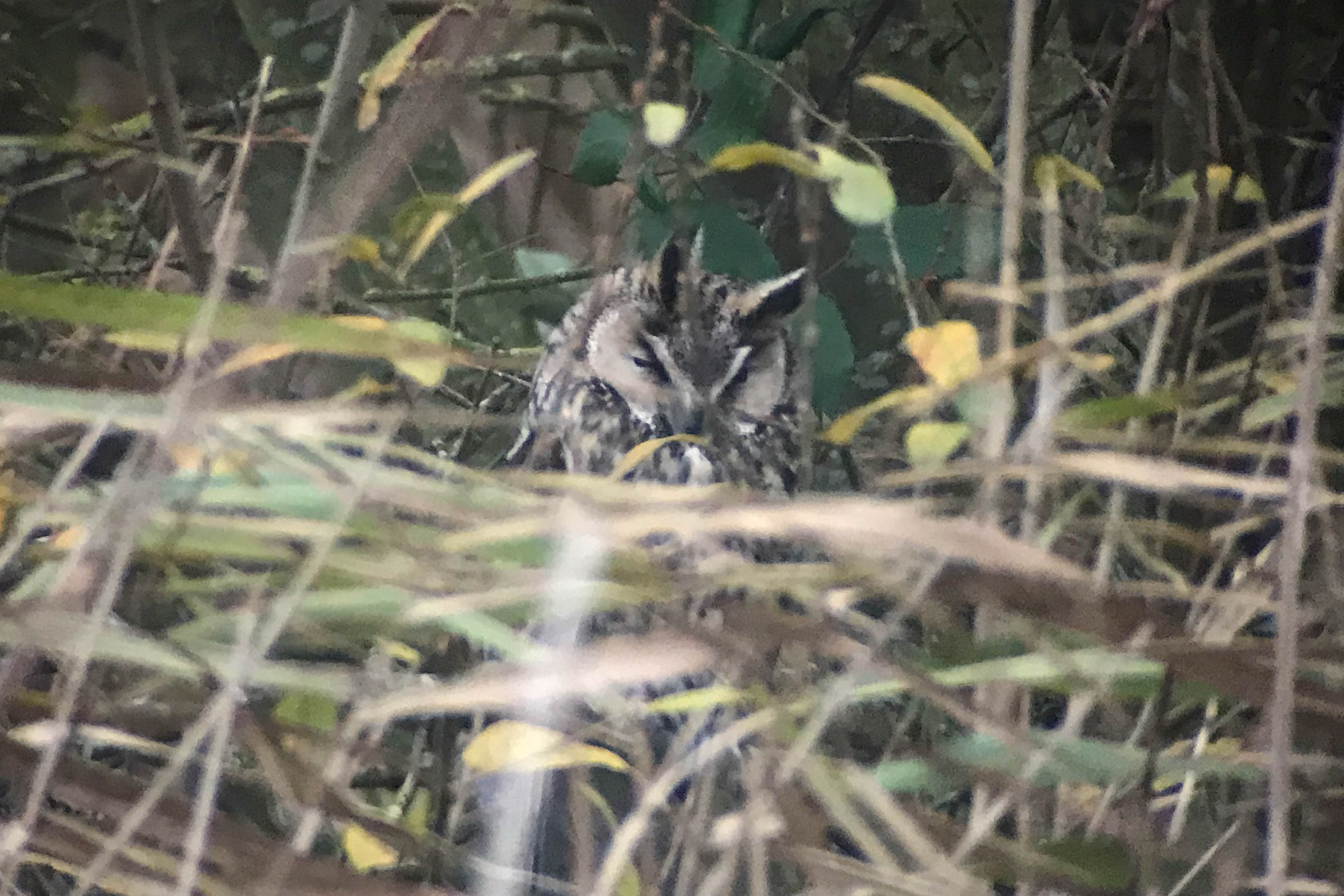
What a great way to end a December long weekend with two excellent birds. And both completely unexpected! The light was starting to go now, a little earlier tonight – it was rather grey and we could see darker clouds approaching. It just started to spit as we got back to minibus and started to rain on and off on the drive back. Perfect timing!
















